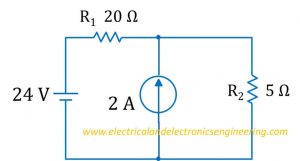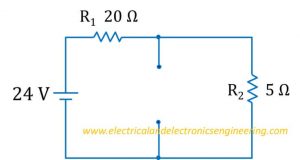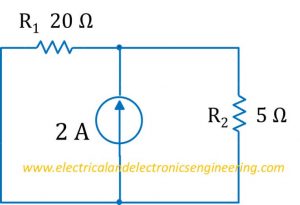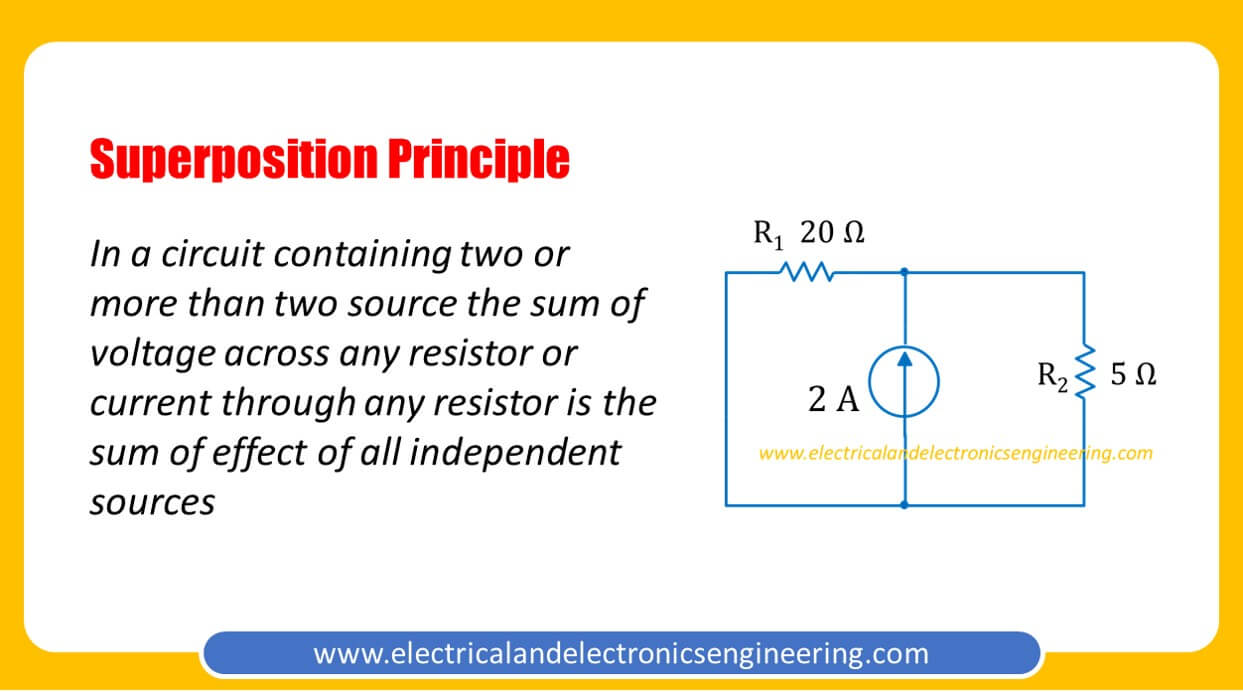Superposition Principle is applied to electrical circuits containing two or more sources. Superposition principle is used to determine the current or voltage through any resistor or component in a network containing multiple items. Statement of Superposition principle:
The total current through a resistor or the total voltage across a resistor can be determined by summing the effect due to individual sources.
To apply superposition theorem each source is considered one by one and other sources are replaced by a short or open circuit. A voltage source is replaced by a short circuit, while the current source is replaced by an open circuit.
An example on Superposition Theorem
Apply Superposition theorem to find the voltage across 5 ohms resistor

The total voltage across resistor R2 (5 ohms) is the sum of individual voltage provided by 24 voltage source and 2 A current source.
Step 1: Firstly we reduce current source (make it zero) and find the voltage across 5 ohms resistor.

Step 2: The circuit is now reduced to a series circuit. By applying voltage divider formula:

V2 = {5 Ω / (20 Ω + 5 Ω)} * 24 V = 4.8 V … (1)
Step 3: Let’s return to the original circuit and replace the voltage source by a short

Step 4: Our circuit is now reduced to a current divider circuit. Let’s apply firstly the current divider rule to find current:

I2 = {20 Ω / (20 Ω + 5 Ω)} * 2 A = 1.6 A … (2)
Using Ohm’s law we can easily find the voltage across resistor:
V2A = I2.R2 = 1.6 A * 5 Ω = 8 V … (3)
Step 5: Summing the effect of voltage due to both sources we can obtain the voltage across 5 ohms resistor:
From equation 1 & 3
V = V2 + V2A = 4.8 V + 8 V = 12.8 V
